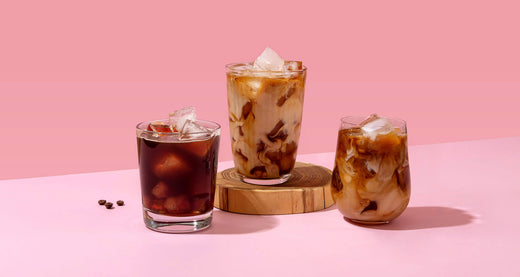Iced coffee is a refreshing and versatile drink loved by coffee enthusiasts worldwide. While it may seem simple, brewing coffee specifically for iced versions requires thoughtful preparation to ensure a perfectly balanced and flavorful cup. This guide walks you through the best practices for brewing coffee for iced coffee, covering everything from bean selection to brewing techniques.
What Is Iced Coffee, and Why Does Brewing Matter?
Iced coffee is simply coffee served over ice. However, not all coffee is brewed equally for iced versions. When hot coffee is poured over ice, dilution often occurs, leading to a weak, flavorless beverage. To combat this, brewing methods and ratios must be adjusted to ensure a bold and satisfying drink. Proper brewing enhances flavor clarity, balance, and overall enjoyment.
- 4 ways to make coffee at home to create the most delicious flavor
- The Best Time of Day to Drink Coffee for Your Health

Choosing the Right Coffee Beans for Iced Coffee
The foundation of great iced coffee lies in selecting quality beans:
- Roast Profile: Opt for medium to dark roasts to achieve the bold flavors needed to shine through ice and milk. Light roasts may taste too acidic or subtle when chilled.
- Single-Origin or Blend: Single-origin beans offer unique flavor profiles, while blends often provide a balanced, versatile base for iced coffee.
- Grind Size: Match the grind size to your brewing method. For example, coarse grinds suit cold brew, while medium-fine grinds work well for hot brewing methods.
Top Brewing Methods for Iced Coffee
1. Hot Brew + Ice Method
This classic approach involves brewing hot coffee and immediately cooling it over ice.
-
Steps:
- Brew your coffee using your preferred method (drip, pour-over, or French press).
- Use a higher coffee-to-water ratio (e.g., double strength) to account for dilution.
- Pour the hot coffee directly over a glass filled with ice.
-
Tip: To avoid over-dilution, use coffee ice cubes instead of regular ice.
2. Japanese Iced Coffee Method
Japanese iced coffee is a refined method that brews hot coffee directly over ice for immediate cooling and flavor preservation.
- Steps:
- Place ice in your carafe or cup.
- Brew coffee using a pour-over method, adjusting the water-to-coffee ratio to compensate for the ice (e.g., 40% of the water weight as ice).
- Allow the coffee to melt the ice while extracting bold flavors.
This method preserves aromatic compounds and produces a crisp, refreshing cup.
3. Cold Brew Concentrate
Cold brew is a popular alternative to hot brewing for iced coffee. It involves steeping coarsely ground coffee in cold water over an extended period.
- Steps:
- Combine coffee and water in a 1:4 ratio.
- Steep in the refrigerator for 12–18 hours.
- Strain the concentrate and dilute with water or milk before serving over ice.
Cold brew offers a smooth, low-acidity option for iced coffee lovers.
4. Espresso-Based Iced Coffee
Espresso is the base for iced lattes and iced americanos.
- Steps:
- Brew a shot of espresso.
- For an iced latte, mix the espresso with milk and pour over ice.
- For an iced americano, dilute the espresso with cold water before adding ice.
Espresso creates a strong foundation for customizable iced coffee drinks.
Tips for Perfect Iced Coffee Every Time
Coffee Ice Cube Hacks
Use frozen coffee cubes to prevent dilution.
Experiment with milk, cream, or flavored ice cubes for creative variations.

Sweeteners and Syrups
Dissolve sugar or syrups in hot coffee before chilling for even sweetness.
Try flavored syrups like vanilla, caramel, or hazelnut.
Dairy and Non-Dairy Options
Enhance richness with milk, cream, or plant-based alternatives like almond or oat milk.
Common Mistakes to Avoid
- Weak Brewing: Ensure your coffee is strong enough to stand up to ice and milk.
- Wrong Grind Size: Match your grind size to your brewing method for optimal extraction.
- Improper Ratios: Adjust coffee-to-water ratios to avoid over-dilution and weak flavors.
Experimenting with Iced Coffee Recipes
Elevate your iced coffee game by trying creative twists:
- Flavor Infusions: Add cinnamon, vanilla, or citrus zest during brewing.
- Regional Styles: Explore Vietnamese iced coffee with sweetened condensed milk or Thai iced coffee with spices.
- Toppings: Top your iced coffee with whipped cream, chocolate shavings, or caramel drizzle.
FAQs About Brewing Coffee for Iced Coffee
-
Can I use leftover coffee for iced coffee?
Yes, but fresh-brewed coffee yields the best flavor. Use leftover coffee for coffee ice cubes instead. -
What is the ideal coffee-to-water ratio for iced coffee?
For hot brewing, use a 1:10 ratio and brew double strength. For cold brew, use a 1:4 ratio for concentrate. -
Is cold brew better than iced coffee?
It depends on your preference. Cold brew is smoother and less acidic, while iced coffee retains more complex flavors from hot extraction.
Conclusion
Brewing coffee for iced coffee is more than just pouring coffee over ice; it’s about achieving the perfect balance of flavor, strength, and refreshment. Whether you prefer hot brewing methods or the smoothness of cold brew, mastering these techniques will enhance your iced coffee experience. Experiment with different beans, brewing styles, and flavors to discover your favorite recipe.
Enjoy your journey to creating the perfect iced coffee, and for more coffee tips and recipes, explore the resources available on Kimecopak.ca!




